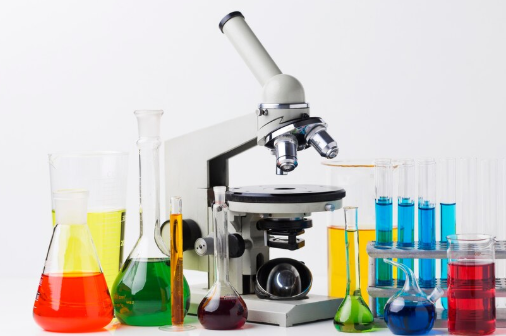
Want to know how much product a reaction will make?
This is where stoichiometry truly shines.
When two substances react, the product depends on how much of each is available — and most importantly, how they combine according to a balanced equation.
In this example, we’re working with calcium chloride (CaCl₂) and silver nitrate (AgNO₃).
Your goal?
To calculate the number of moles of silver chloride (AgCl) produced from 1.5 g of CaCl₂ and 15 mL of 0.1 M AgNO₃.
Let’s break it down.
Step 1: Write the balanced chemical equation
Always start with the equation that governs the reaction.
CaCl₂ + 2 AgNO₃ → 2 AgCl + Ca(NO₃)₂
This tells us that 1 mole of calcium chloride reacts with 2 moles of silver nitrate to produce 2 moles of silver chloride.
The key mole ratios are:
1 CaCl₂ : 2 AgNO₃ : 2 AgCl
Step 2: Convert the mass of CaCl₂ to moles
You’re given 1.5 g of calcium chloride.
To convert this to moles, use the molar mass.
Calcium (Ca) = 40 g/mol
Chlorine (Cl) = 35.5 g/mol
So:
Molar mass of CaCl₂ = 40 + (2 × 35.5) = 111 g/mol
Now use:
Moles = Mass ÷ Molar Mass
Moles of CaCl₂ = 1.5 ÷ 111 = 0.0135 moles
This is the amount of calcium chloride available to react.
Step 3: Convert the volume of AgNO₃ to moles
We are given a solution: 15 mL of 0.1 M AgNO₃.
First, convert milliliters to liters:
15 mL = 0.015 L
Now calculate the moles of AgNO₃:
Moles = Molarity × Volume (in L)
Moles of AgNO₃ = 0.1 × 0.015 = 0.0015 moles
That’s your available silver nitrate.
Step 4: Identify the limiting reagent
From the equation:
1 mole of CaCl₂ reacts with 2 moles of AgNO₃
So:
Required AgNO₃ = 0.0135 × 2 = 0.027 moles
But you only have 0.0015 moles of AgNO₃.
That’s clearly not enough.
So AgNO₃ is the limiting reagent, and it will determine how much AgCl is produced.
Step 5: Use mole ratio to calculate moles of AgCl
Now apply the mole ratio between AgNO₃ and AgCl.
From the equation:
2 AgNO₃ → 2 AgCl
So it’s a 1:1 ratio.
This means:
Moles of AgCl = Moles of AgNO₃ = 0.0015 moles
That’s your final answer.
0.0015 moles of AgCl will be produced.
Step 6: Quick check with simplified ratios
Let’s validate with a shortcut:
- You have 0.0015 moles of AgNO₃
- Equation says 2 AgNO₃ : 2 AgCl
This confirms a 1:1 molar relationship.
No further adjustment needed.
The math checks out.
Step 7: Where students often go wrong
First, many forget to convert milliliters to liters when using molarity.
This one step can wreck your entire calculation.
Second, don’t assume the substance with the higher number (like 1.5 grams of CaCl₂) always produces more product.
You must compare moles, not grams.
Third, watch your ratios.
Just because two substances are reacting doesn’t mean they’re doing so in a 1:1 ratio.
That’s why balanced equations matter.
Step 8: Real-world application of this reaction
Why do we care about silver chloride?
Well, AgCl is a key component in photographic films, precipitation reactions, and even water testing kits.
In analytical chemistry, this reaction is used in gravimetric analysis to detect and measure the presence of chloride ions in a solution.
On a larger scale, such reactions are used in wastewater treatment to remove unwanted halides and metals.
So this isn’t just school math — it’s industrial science in action.
Step 9: What if the amounts were reversed?
Let’s say you had more AgNO₃ and less CaCl₂.
Would that change the amount of AgCl formed?
Yes, absolutely.
In that case, CaCl₂ could become the limiting reagent, and you’d use the mole ratio from CaCl₂ to AgCl, which is 1:2.
That means the reactant that runs out first always determines the amount of product.
This is why identifying the limiting reagent is non-negotiable in stoichiometry.
Step 10: Final conversion tip
Sometimes exam questions ask for mass of AgCl, not moles.
Here’s how you’d convert:
Molar mass of AgCl = 108 (Ag) + 35.5 (Cl) = 143.5 g/mol
Then:
Mass = Moles × Molar Mass
Mass = 0.0015 × 143.5 = 0.21525 g
So that’s 0.215 g of AgCl, if needed.
Always be ready to switch between moles and grams, depending on what the question asks.
Final Wrap-Up
When 1.5 g of CaCl₂ reacts with 15 mL of 0.1 M AgNO₃, the amount of silver chloride formed is 0.0015 moles.
The silver nitrate is the limiting reagent, which means the reaction stops when all of it is consumed.
Even though calcium chloride is in excess, it doesn’t matter — the limiting reagent sets the pace.
Being able to spot the limiting reagent, apply the right ratios, and convert between units is the backbone of solving real stoichiometry problems with confidence.
Want to stay sharp and prepare for similar questions?
Visit our website to find guided tutorials, worksheets, and video explanations designed to help you master stoichiometry step by step.
